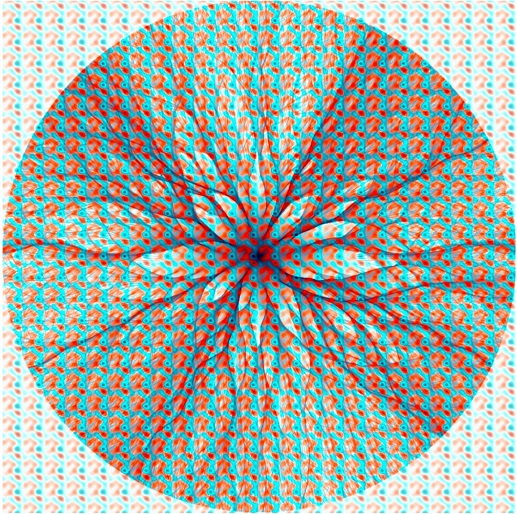Physicists from URJC, Harvard and the University of Tampere have studied how the propagation of electrons in a periodic lattice can produce a tree pattern. This structure, known as branched flow, is the same that originates in tsunamis and its appearance in periodic systems can have important consequences for the study of superconductivity and optical networks, among other applications.
When you throw a stone into a pond, the water ripples in concentric circles that travel towards the shore. The energy is distributed uniformly, in such a way that as we move away from the point where the stone fell, the effect we perceive is less. However, this is not what happens in tsunamis. Due to the irregularities of the ocean floor, tsunamis do not distribute their energy in a homogeneous way, but it accumulates in some especially intense branches, with the devastating consequences that are known. This branched flow) is a phenomenon common to all waves that propagate through irregular means, including examples as diverse as electrons traveling in two-dimensional gases, laser light passing through soap bubbles, or tsunamis themselves. Physicists from URJC, Harvard and the University of Tampere, in their recent article published in the prestigious journal Proceedings of the National Academy of Sciences (PNAS), have shown for the first time that branching flow can also occur in regular or periodic systems, which opens up a whole new range of applications.
"This is a revolutionary discovery because until now researchers did not expect to see a chaotic branching flow in ordered media, such as in solids where the atoms form an ordered network," says Esa Räsänen, professor in the Physics Unit of the University of Tampere and co-author of the article. The traditional paradigm for describing periodic systems is Bloch waves, functions that reflect the periodicity of the system. However, using these periodic functions it is difficult to imagine such irregular structures as those of the branched flow. "We have adopted a different perspective in the study of these periodic systems, making use of tools from time-dependent quantum mechanics and non-linear dynamics," says Álvar Daza,
One of the most important aspects of the work is that some of the branches that occur in periodic systems are infinitely stable, giving rise to what the authors have called supercables . "The interesting thing is that the electrons that travel through these super cables have enough energy to go somewhere else and disperse, but the dynamics of the system make them remain stable," explains Álvar Daza. "The discovery of the branched flow of electrons may open innovative applications in the race to find new superconductors among two-dimensional materials, such as graphene and its many derivatives," concludes Räsänen.
